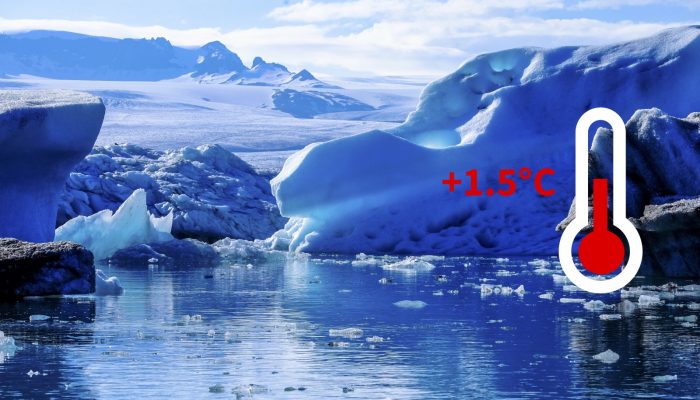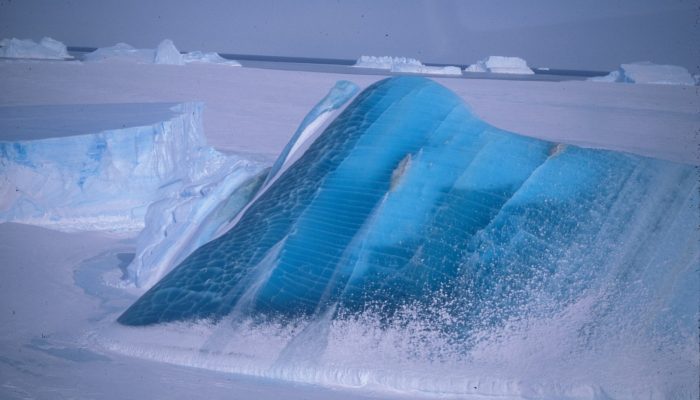Crew in hardhats and red safety gear bustle about, preparing our ship for departure. A whale spouts nearby in the Straits of Magellan, a fluke waving in brief salute, before it submerges again. Our international team of 29 scientists and 2 science communicators, led by co-Chief Scientists Mike Weber and Maureen Raymo, is boarding the JOIDES Resolution, a scientific drilling ship. We’re about to jo ...[Read More]
Image of the Week – Seven weeks in Antarctica [and how to study its surface mass balance]
After only two months of PhD at the Laboratoire de Glaciologie of the Université libre de Bruxelles (ULB, Belgium), I had the chance to participate in an ice core drilling campaign in the Princess Ragnhild coastal region, East Antarctica, during seven weeks in December 2018 – January 2019 for the Mass2Ant project. Our goal was to collect ice cores to better evaluate the evolution of the surf ...[Read More]
Image of the Week – What’s Hot in the Cryosphere? A 2018 review
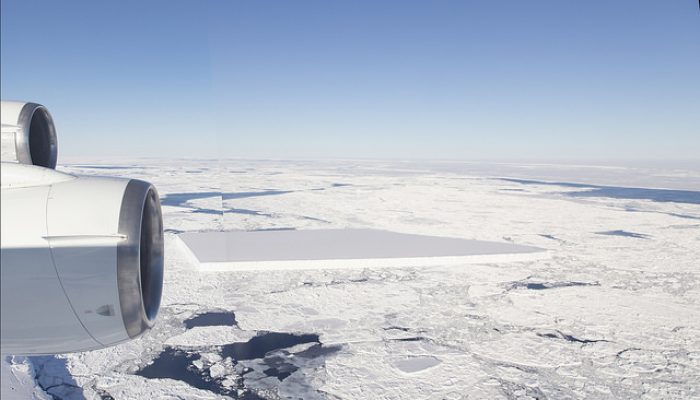
Every year, humanity understands more and more about a remote and unforgiving component of the Earth system – the cryosphere. 2018 has been no exception, and in this blog post we’ll take a look at some of the biggest scientific findings of cryospheric science in 2018. We will then look forward to 2019 and beyond, to see what the future holds for these rapidly changing climate component ...[Read More]
Ice-hot news: The cryosphere and the 1.5°C target
Every year again, the Conference of Parties takes place, an event where politicians and activists from all over the world meet for two weeks to discuss further actions concerning climate change. In the context the COP24, which started this Monday in Katowice (Poland), let’s revisit an important decision made three years ago, during the COP21 in Paris, and its consequences for the state of the cryo ...[Read More]
Image of the Week – (Un)boxing the melting under the ice shelves
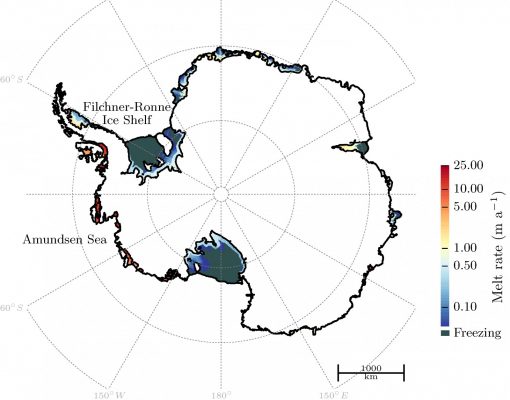
The Antarctic ice sheet stores a large amount of water that could potentially add to sea level rise in a warming world (see this post and this post). It is currently losing ice, and the ice loss has been accelerating in the past decades. All this is linked to the melting of ice – not at the surface but at the base, underneath the so-called ice shelves which form the continuation of the Antarctic i ...[Read More]
Do clouds affect melting over Antarctic ice shelves?
The Antarctic Peninsula is the ‘canary in the coalmine’ of Antarctic climate change. In the last half-century it has warmed faster than most other places on Earth, and considerable change has consequently been observed in the cryosphere, with several ice shelves collapsing in part or in full. Representing this change in models is difficult because we understand comparatively little abo ...[Read More]
Image of the Week – Oh Sheet!
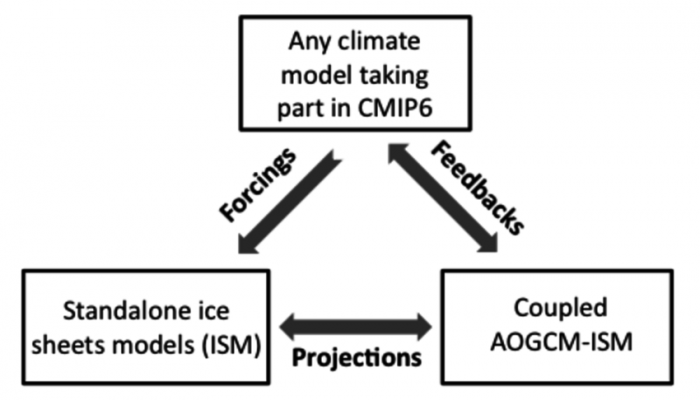
The Antarctic and Greenland ice sheets are major players in future sea level rise. Still, there is a lot about these ice sheets we do not understand. Under the umbrella of the World Climate Research Programme, the international scientific community is coming together to improve ice sheet modelling efforts to better grasp the implications of climate change for ice sheet evolution, and consequently, ...[Read More]
Image of the Week – The future of Antarctic ice shelves
Climate change will increase ice shelf melting around Antarctica. That’s the not-very-surprising conclusion of a recent modelling study, resulting from a collaboration between Australian and German researchers. Here’s the less intuitive result: much of the projected melting is actually linked to a decrease in sea ice formation. Learn why in our Image of the Week… Different types ...[Read More]
Image of the Week — Quantifying Antarctica’s ice loss
It is this time of the year, where any news outlet is full of tips on how to lose weight rapidly to become beach-body ready. According to the media avalanche following the publication of the ice sheet mass balance inter-comparison exercise (IMBIE) team’s Nature paper, Antarctica is the biggest loser out there. In this Image of the Week, we explain how the international team managed to weight Anta ...[Read More]
Image of the Week – Super-cool colours of icebergs
It is Easter weekend! And as we do not want you to forget about our beloved cryosphere, we provide you with a picture nearly as colourful as the Easter eggs: very blue icebergs! What makes them so special? This is what this Image of the Week is about… What are icebergs made of? Icebergs are chunks of ice which break off from land ice, such as glaciers or ice sheets (as you’ll know if you rem ...[Read More]

